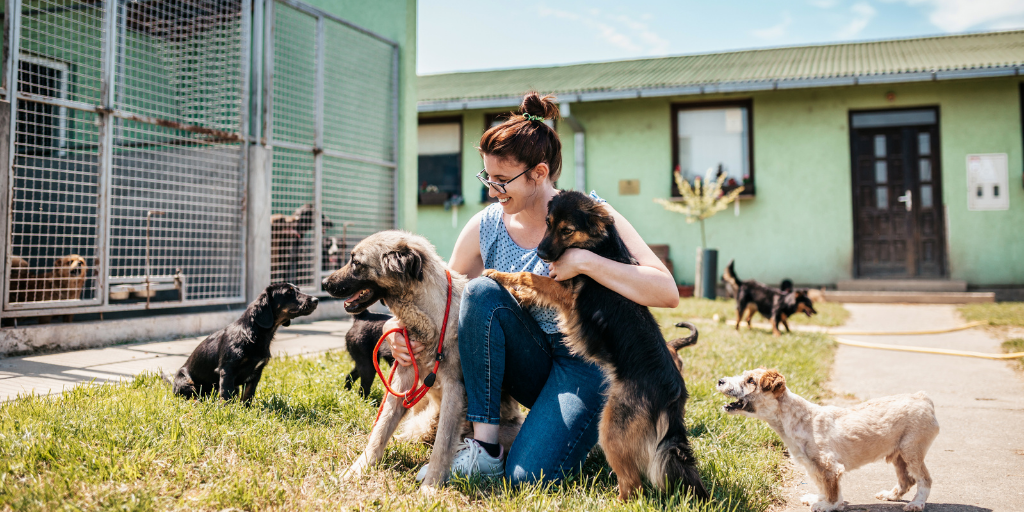Around 3.3 million dogs enter shelters each year and, of those, around 1.6 million are adopted, according to the ASPCA. Rescue dogs are resilient and adopting one can be extremely rewarding. Not only will you be saving a life, but it opens up a spot at the shelter for another dog in need. Many rescue pups have a smooth transition into family life, but some need a little extra help. Here's what to expect when you adopt a rescue dog.
Bringing Your Dog Home
There's going to be an adjustment period when you bring your new dog home. He or she will have to learn your rules and adjust to living in your home. This may mean learning what carpet is, how to walk up and down stairs, getting used to new noises (like a vacuum or television) and more. These can be overwhelming at first, but eventually your dog will become used to how things are.
How Your Dog Is Feeling
This change can be stressful for your new dog, especially if your rescue was in a traumatic situation. But even if he or she was not, transitioning to a new home can still cause stress. Because of this, he or she may be anxious, afraid or timid at first. They may act in unpredictable or unexpected ways. Remember that you don't know much about your new dog's personality yet, and your rescue doesn't know much about you either. He or she doesn't know that you saved her and likely doesn't trust you yet. It takes time for them to adapt to their new surroundings and become familiar with you. It also takes time for you two to learn about each other's tendencies. Patience, love and positive reinforcement are key during this transition.
Common Behavior Issues
As your dog adjusts to their new family and life, they may exhibit some undesired behaviors. This doesn't always happen, but is normal when it does. Some common behaviors you may see during this transition period include:
- Accidents or marking territory
- Chewing
- Barking
- Hiding
- Possessiveness with treats or toys (signs of which include giving you the side-eye, growling, and more)
- Leash aggression
- Separation anxiety
- Timidness or nervousness around strangers
Some of these behaviors can be managed or resolved through training or other means. For example, crate training, exercise, consistent routine, positive reinforcement and other forms of training can all help. However, additional training may be needed for a few of these behaviors (such as leash aggression, possessiveness and nervousness).
New Dogs Need Training
Most new dogs will need some form of training, whether they are rescues or puppies. Some may need potty training, while others will know to do their business outside. Some may require crate training, while others already are or look at a crate as a safe place. Many will need to learn obedience training, nice manners when greeting people (like not jumping or being anxious) or how to properly walk on a leash. Consistency and positive reinforcement are key when training your new dog.
The First Months
The first few months with your new dog are about building a relationship and bonding. This involves learning his or her personality, body language and preferences. It also involves your dog familiarizing his or herself with you and learning to trust you. Remember to take things slowly during this time, be patient and provide a lot of love and support.

